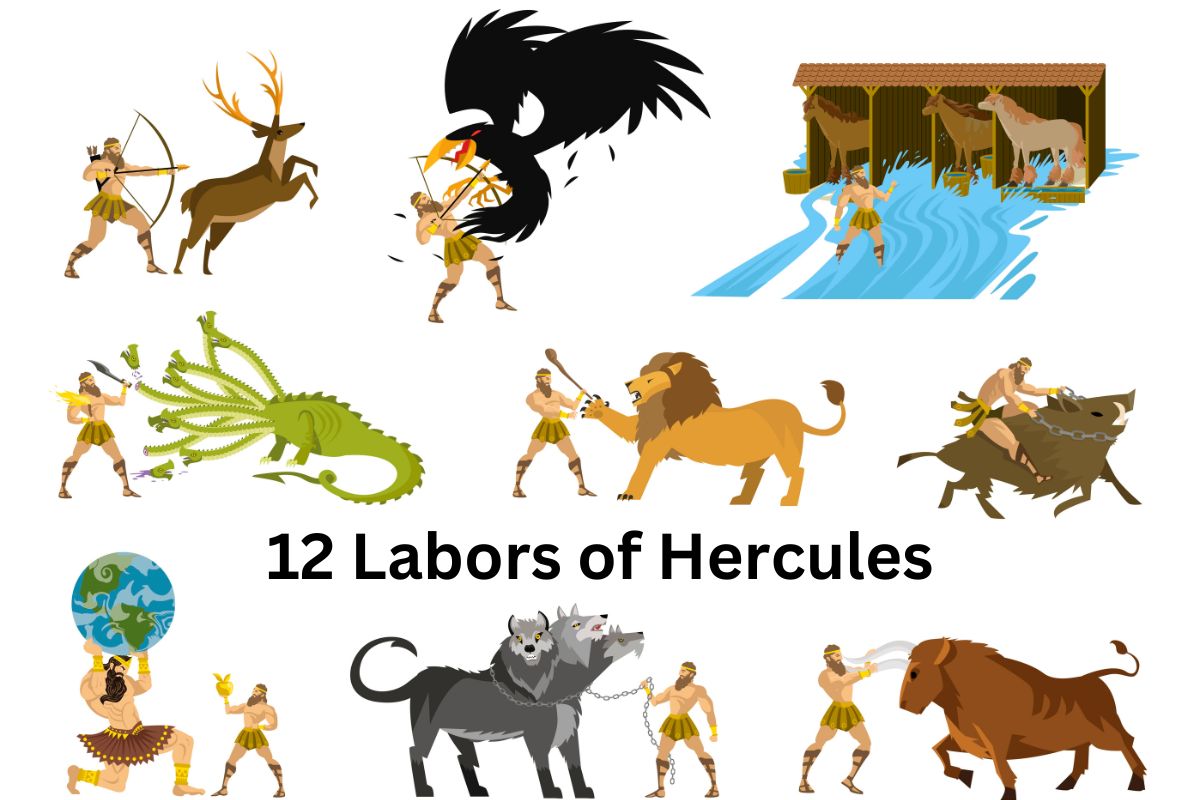In the realms of ancient Greek mythology, The 12 Labors of Hercules stand as an enduring testament to the extraordinary strength and courage of one of history’s most celebrated heroes.
Assigned as penance for a grave transgression, these twelve daunting tasks challenged Hercules, the demigod son of Zeus, to confront formidable creatures, conquer insurmountable challenges, and display unwavering valor.
Through this epic saga of heroic trials, Hercules’ indelible legacy as a symbol of heroism continues to inspire and captivate generations across the ages.
Join us as we delve into the extraordinary saga of the 12 Labors of Hercules, where each feat becomes a testament to the resilience and heroism that forever etched the name of Hercules in the annals of history.
Brief Backstory
Hercules, also known by his Greek name Heracles, was a divine hero in Greek mythology, the son of Zeus (king of the gods) and Alcmene, a mortal woman. He was renowned for his incredible strength and for his numerous far-ranging adventures.
The most famous of these are the Labors of Hercules, a series of tasks that Hercules was required to perform as penance for killing his wife and children in a fit of madness, which was induced by the goddess Hera, who despised Hercules because he was a living reminder of her husband Zeus’ infidelity.
The labors were assigned to Hercules by his cousin, King Eurystheus of Tiryns, who was acting on the orders of Hera.
How Many Labors did Hercules Complete?
Hercules completed twelve labors, they were so challenging that they seemed impossible. Fortunately, Hermes and Athena, two sympathetic deities, assisted Hercules when he needed assistance the most. At the conclusion of these Labors, Hercules was undeniably Greece’s finest champion.
| Labor | Overview |
|---|---|
| 1. Slay the Nemean Lion | – The Nemean Lion’s golden fur made it invulnerable to weapons, necessitating Hercules to strangle it with his bare hands. |
| 2. Slay the Lernaean Hydra | – As Hercules chopped off one head, two new heads would regenerate, making the task more challenging. |
| – With the help of his nephew Iolaus, Hercules cauterized the neck stumps to prevent the regeneration, allowing him to defeat the Hydra. | |
| 3. Capture the Golden Hind of Artemis | – The Golden Hind was a swift and elusive creature, making the task of capturing it difficult. |
| 4. Capture the Erymanthian Boar | – The Erymanthian Boar caused havoc on Mount Erymanthus and was known for its ferocity. |
| 5. Clean the Augean Stables | – Hercules diverted two rivers, Alpheus and Peneus, to cleanse the vast and filthy stables, accomplishing the labor in a single day. |
| – King Augeas, despite the completion of the labor, refused to reward Hercules, leading to further conflicts. | |
| 6. Slay the Stymphalian Birds | – The Stymphalian Birds had metallic feathers and were known to be man-eating creatures that infested the Stymphalian marshes. |
| – Athena provided Hercules with bronze krotala (clappers) to startle the birds from their hiding places, making them vulnerable to Hercules’ arrows. | |
| 7. Capture the Cretan Bull | – The Cretan Bull was a powerful and untamed creature that caused chaos on the island of Crete. |
| 8. Steal the Mares of Diomedes | – The Mares of Diomedes were fierce horses that consumed human flesh, making them a formidable challenge for Hercules. |
| – After capturing the mares, Hercules fed their cruel owner, King Diomedes, to his own horses, as punishment for his savagery. | |
| 9. Obtain the Girdle of Hippolyta | – The Girdle of Hippolyta was a symbol of authority, worn by the queen of the Amazons. |
| – Hercules either fought the Amazons to obtain the girdle or convinced Hippolyta to give it to him willingly, depending on different versions of the myth. | |
| 10. Capture the Cattle of Geryon | – The Cattle of Geryon were guarded by Orthus, a two-headed dog, and Eurytion, Geryon’s herdsman. |
| – Hercules had to travel to the far western edge of the world to reach the island of Erytheia where Geryon lived. | |
| 11. Steal the Apples of the Hesperides | – The golden apples were a gift from Gaia to Hera and were kept in the garden of the Hesperides, guarded by the nymphs. |
| – Hercules tricked Atlas into retrieving the apples while he held up the heavens, making it possible for him to obtain the apples. | |
| 12. Capture Cerberus, the guardian dog of the Underworld | – Cerberus was a three-headed dog that guarded the gates of the Underworld, preventing the living from entering and the dead from leaving. |
| – Hercules received permission from the gods to enter the Underworld and managed to overpower and capture Cerberus, bringing him to King Eurystheus before returning him to the Underworld. |
The Twelve Labors of Hercules
1. Slay the Nemean Lion
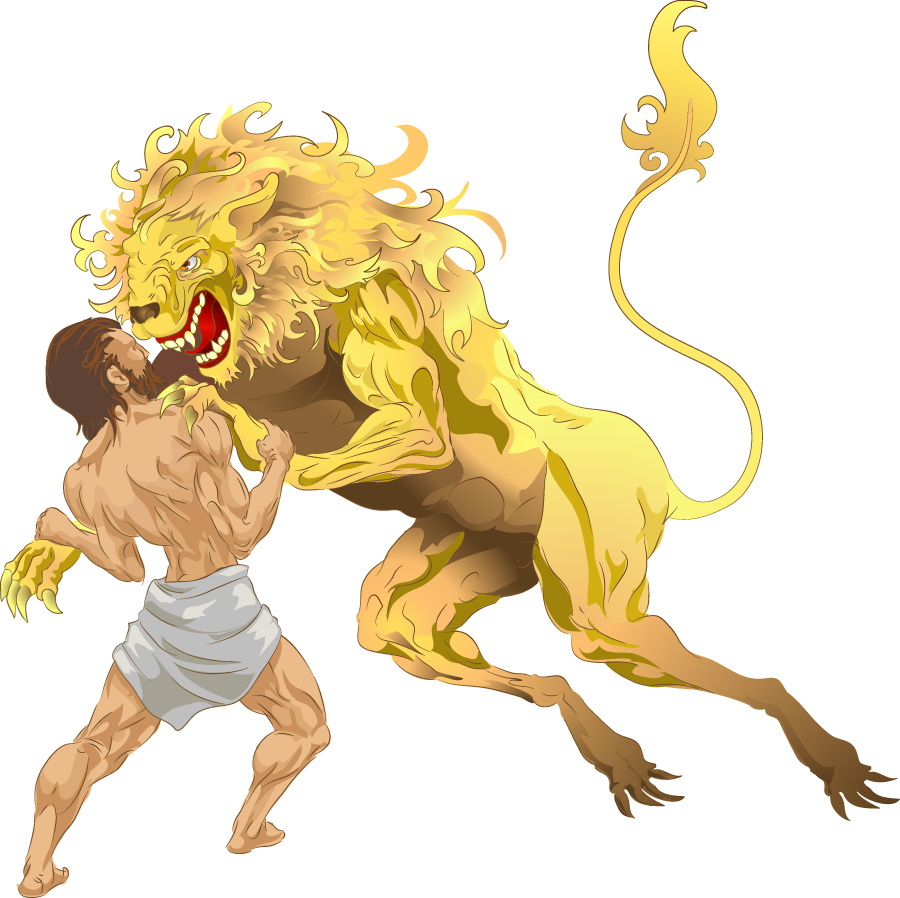
The Nemean Lion was a monstrous creature with impenetrable golden fur, making it invulnerable to most weapons. Its strength was unparalleled, and it had been causing devastation in the region of Nemea.
Armed with only his bare hands, Hercules set out to confront the lion in its lair. The initial attempts to pierce the lion’s hide with his arrows and club were futile, as they bounced off harmlessly. Recognizing that brute force alone wouldn’t work, Hercules devised a strategy.
Using his cunning, he trapped the lion in a cave, where it could not escape or sneak up from behind. Hercules then grappled with the beast, relying on his immense strength and wrestling skills.
He eventually strangled the Nemean Lion, overpowering it and bringing an end to its reign of terror. As a trophy, he skinned the lion using its own sharp claws, creating his iconic lion’s skin cloak, which became one of his symbols.
2. Slay the Lernaean Hydra
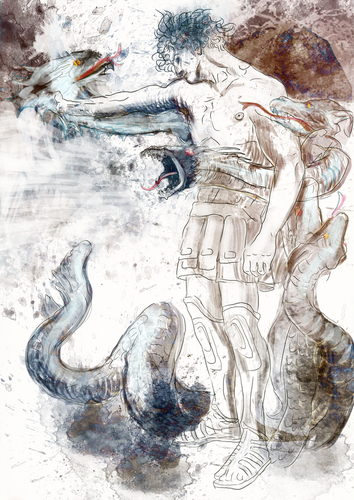
The Lernaean Hydra was a fearsome water serpent with multiple regenerating heads. It lived in the murky swamps near the lake of Lerna and was a challenge even for the mighty Hercules. With the help of his nephew Iolaus, who was known for his cleverness, Hercules came up with a plan to defeat the Hydra.
As Hercules chopped off one head, two new heads grew back in its place. To counter this, Iolaus cauterized the neck stumps with a flaming torch immediately after each decapitation, preventing the regeneration.
After a fierce and arduous battle, Hercules succeeded in severing all the Hydra’s heads, except one immortal head. He buried the immortal head under a massive rock, which became a landmark in the region.
To honor the heroic victory, Hera, who was the instigator of these labors, placed the Hydra among the stars as the constellation Hydra.
3. Capture the Golden Hind of Artemis
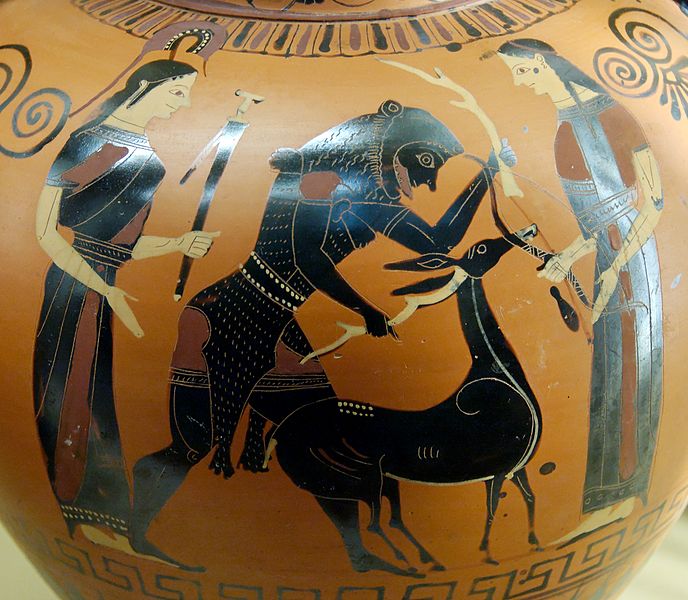
The third labor required Hercules to capture the Ceryneian Hind, a sacred deer with golden antlers, which was a prized possession of the goddess Artemis. This task was challenging as the deer was not only swift but also sacred, and harming it would anger the goddess and bring divine punishment.
Hercules embarked on a long and difficult hunt, tracking the elusive deer through rugged terrains and dense forests. His patience and determination were put to the test as the hind proved to be a master of evasion.
In some versions of the myth, the hind was so fleet-footed that it led Hercules on a chase that lasted an entire year.
Eventually, Hercules managed to corner the deer without causing any harm. Understanding the significance of the creature to Artemis, he respectfully explained his mission and persuaded the goddess to allow him to take the deer to complete his labor.
Artemis, recognizing his valor and respecting his plea, agreed to his request, and Hercules successfully captured the Golden Hind, gently carrying it back to King Eurystheus.
4. Capture the Erymanthian Boar
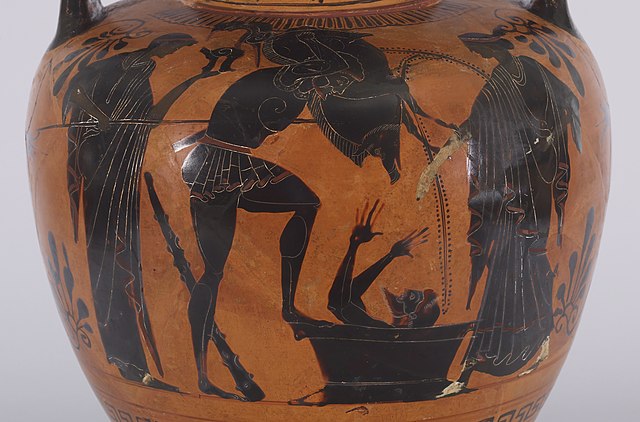
For his fourth labor, Hercules was tasked with capturing the Erymanthian Boar, a fearsome and gigantic boar that roamed the slopes of Mount Erymanthus. This boar was known for its ferocity and the destruction it caused in the surrounding areas.
Hercules set out on his journey to confront the boar, armed with his trusty club and determination. He tracked the beast through the dense forests and treacherous terrain until he finally located it.
In a fierce and grueling battle, Hercules managed to overpower the boar and captured it alive, proving once again his strength and valor.
5. Clean the Augean Stables

The fifth labor required Hercules to clean the Augean Stables, which housed an enormous number of cattle belonging to King Augeas. The stables had not been cleaned for years, and the filth and manure had accumulated to an unimaginable level, creating a seemingly impossible task.
Hercules, undeterred by the enormity of the labor, devised an ingenious plan. Instead of laboriously cleaning the stables by hand, he diverted two nearby rivers, Alpheus and Peneus, through the stables, allowing the rushing waters to wash away the accumulated filth in a single day.
However, upon completing the task, King Augeas refused to reward Hercules, claiming that the labor had been performed in service to King Eurystheus rather than to Hercules himself. This led to a dispute, but Hercules later returned and overthrew King Augeas, installing his son as the new ruler.
6. Slay the Stymphalian Birds
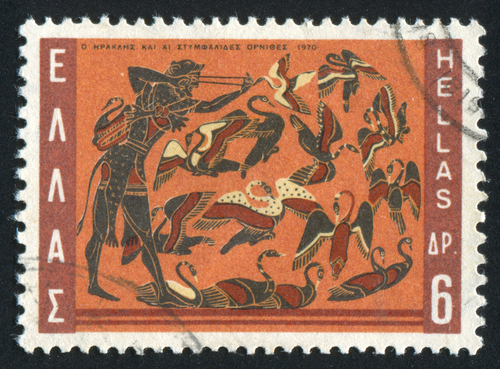
The Stymphalian Birds were a flock of enormous and aggressive birds with bronze beaks and sharp metallic feathers. They lived in the marshes of Stymphalus and terrorized the local inhabitants by swooping down to attack and devour them.
To tackle this labor, Hercules received assistance from the goddess Athena, who gave him a pair of bronze krotala (clappers) to frighten the birds from their hiding places. Making loud noises with the clappers, Hercules startled the birds into taking flight. He then shot them down one by one with his bow and arrows as they were in mid-air.
In this dangerous and challenging task, Hercules’ archery skills and the help of Athena played a crucial role in successfully driving off the menacing Stymphalian Birds, making the region safe once again.
7. Capture the Cretan Bull
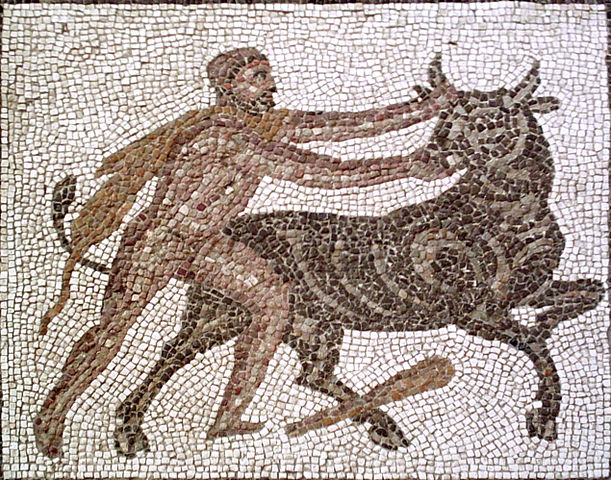
The seventh labor demanded Hercules to capture the Cretan Bull, a powerful and savage creature that was wreaking havoc on the island of Crete. This bull had been a gift from Poseidon to King Minos, but it turned out to be uncontrollable and dangerous.
Hercules set out for Crete and skillfully wrestled the raging bull into submission, showcasing his strength and dominance over the creature. Instead of killing the bull as instructed, Hercules chose to bring it alive to King Eurystheus, demonstrating his ability to exercise restraint and fulfill the labor without unnecessary bloodshed.
Upon seeing the bull, King Eurystheus was terrified and ordered it to be released. The Cretan Bull continued to roam free, eventually meeting its fate at the hands of the hero Theseus during another adventure.
8. Steal the Mares of Diomedes

The eighth labor required Hercules to capture the man-eating mares of Diomedes, which were kept by King Diomedes of Thrace. These horses were vicious and fed on human flesh, making them extremely dangerous.
Upon arriving in Thrace, Hercules confronted the king and engaged in a battle with his guards. After defeating them, he managed to capture the mares.
To further punish King Diomedes for his cruelty, Hercules fed him to his own horses, thereby fulfilling the labor and ensuring the demise of the malevolent king.
9. Obtain the Girdle of Hippolyta
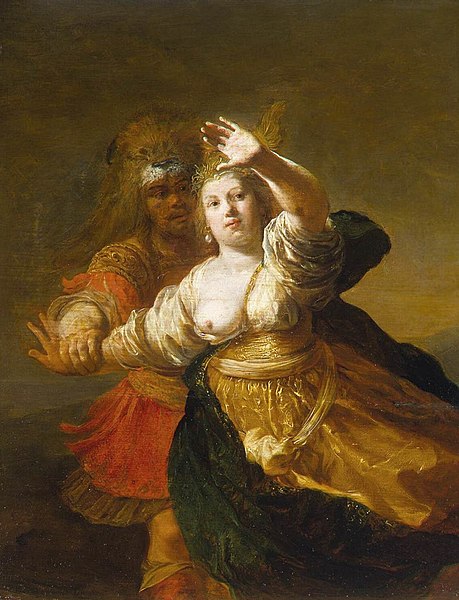
Hippolyta, the queen of the Amazons, possessed a magical girdle (a belt) that was a symbol of her authority. For his ninth labor, Hercules was tasked with obtaining this prized possession.
Approaching the Amazons, Hercules hoped to negotiate peacefully for the girdle. In some versions of the myth, the goddess Hera, once again attempting to thwart him, spread false rumors that Hercules intended to kidnap Hippolyta. The Amazons, believing the rumors, attacked Hercules, and in the ensuing conflict, Hercules killed Hippolyta and claimed the girdle.
In other versions of the myth, Hercules succeeded in convincing Hippolyta to give him the girdle willingly. Regardless of the details, he acquired the girdle and added another achievement to his list of labors.
10. Capture the Cattle of Geryon
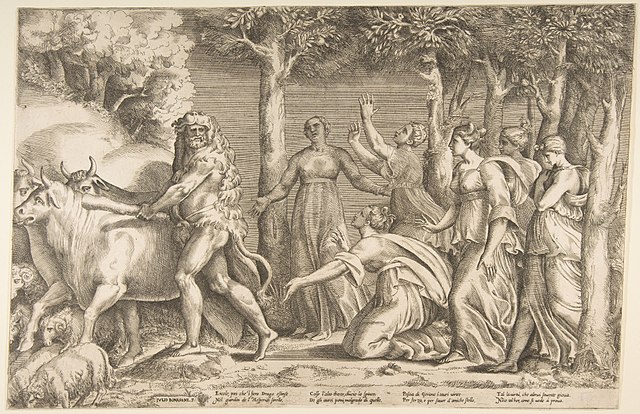
For the tenth labor, Hercules was tasked with capturing the red cattle of Geryon, a fearsome giant who ruled over the island of Erytheia. The cattle were guarded by Orthus, a two-headed dog, and Eurytion, Geryon’s herdsman.
To reach the island, Hercules had to travel to the western edge of the world. He crossed the ocean on the golden cup of Helios, the sun god, and landed on Erytheia. After a formidable battle, Hercules defeated Orthus, Eurytion, and Geryon, and successfully herded the red cattle.
Returning with the cattle, Hercules had to face another challenge when he passed through the land of the giant Atlas.
To assist him in holding the heavens, Atlas offered to deliver the cattle to King Eurystheus while Hercules took on the weight of the heavens temporarily. Hercules agreed, and once Atlas returned, he continued his journey back home.
11. Steal the Apples of the Hesperides
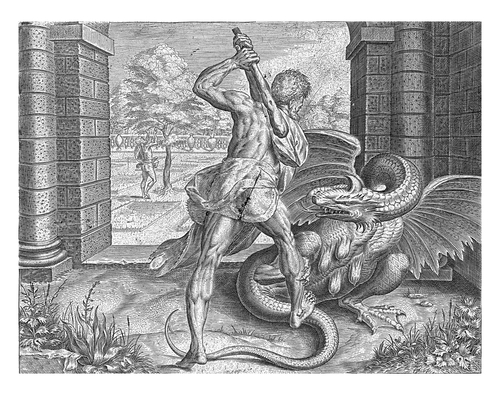
Hercules’ eleventh labor was to obtain the golden apples from the garden of the Hesperides. The Hesperides were nymphs who guarded the tree, and the golden apples were a gift from Gaia to Hera on her wedding day.
To reach the garden, Hercules sought the assistance of Prometheus, who advised him to first locate the Titan Atlas. Hercules found Atlas and asked for his help in acquiring the apples. Atlas agreed to get the apples if Hercules would hold up the heavens in his place.
Hercules took on the burden and, while Atlas retrieved the apples, he tricked Atlas into holding the heavens again once he returned. With the golden apples in his possession, Hercules continued his journey and delivered them to King Eurystheus.
12. Capture Cerberus, the guardian dog of the Underworld
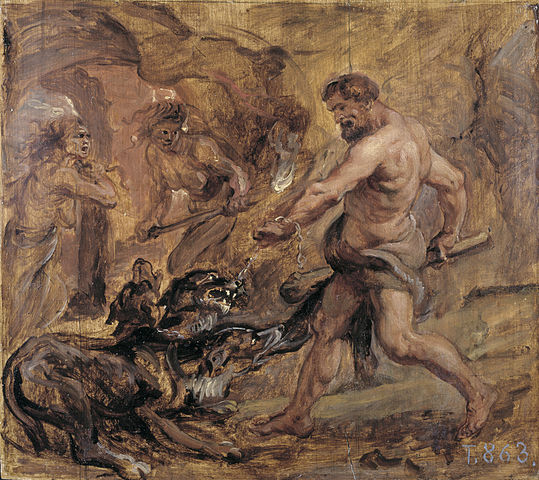
The twelfth and final labor of Hercules was to capture Cerberus, the three-headed, monstrous dog guarding the gates of the Underworld. Cerberus was a fearsome creature and a formidable challenge even for Hercules.
To undertake this task, Hercules sought the guidance of the goddess Hades. After receiving the permission of the gods, Hercules descended into the Underworld and confronted the terrifying beast. Using his strength and wits, he managed to overpower Cerberus and subdue him without harming the creature.
Hercules brought Cerberus back to the world of the living and presented him to King Eurystheus, proving that he had successfully completed all twelve labors. However, Eurystheus was so frightened by Cerberus that he pleaded with Hercules to return the creature to the Underworld, which Hercules did, releasing Cerberus once more.
Having accomplished these incredible tasks, Hercules had successfully redeemed himself and achieved immortality, becoming one of the most celebrated and revered heroes in Greek mythology. Hercules 12 labors became legendary feats that inspired generations to come.
